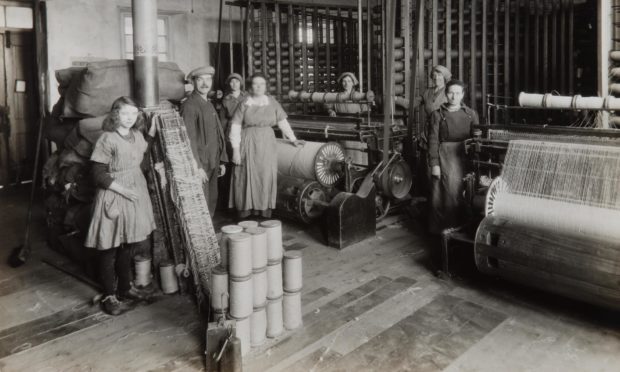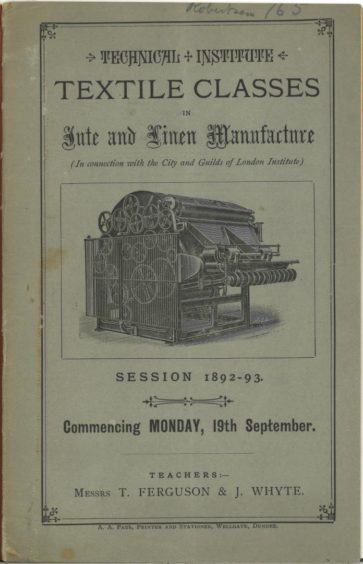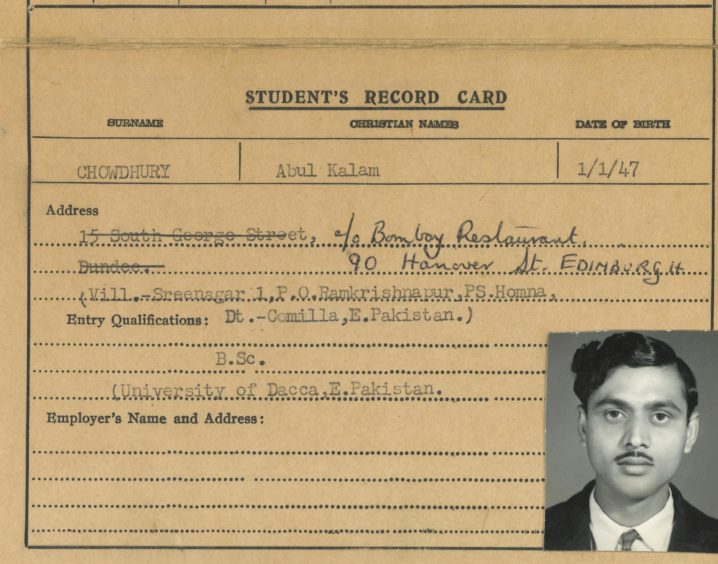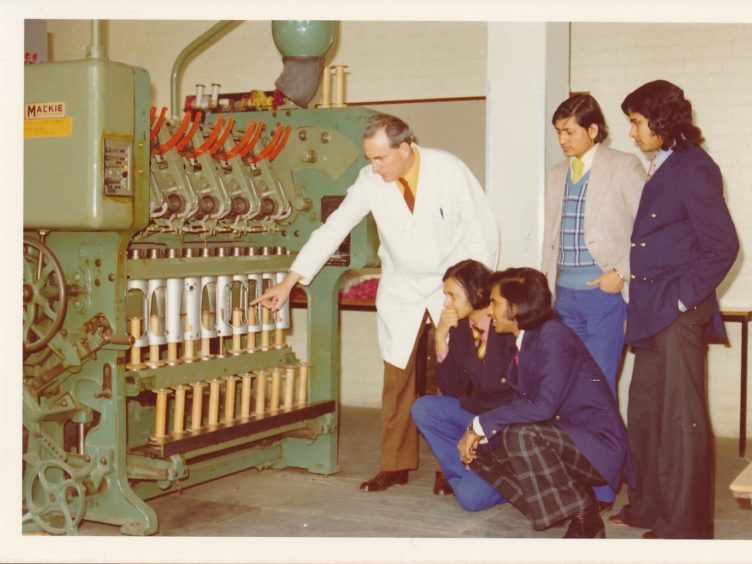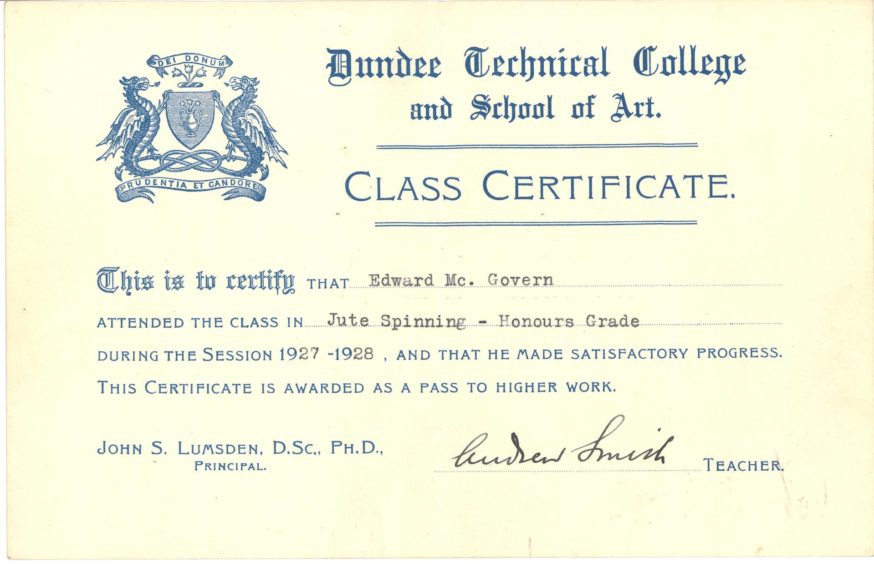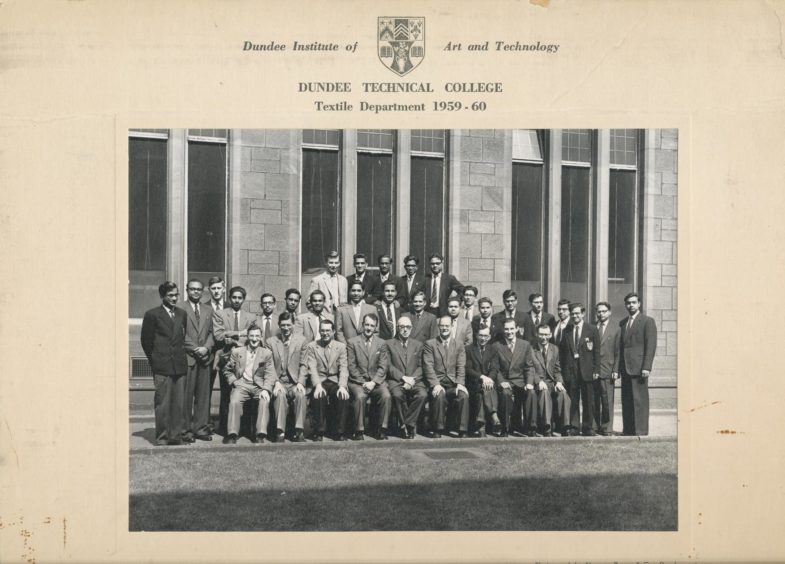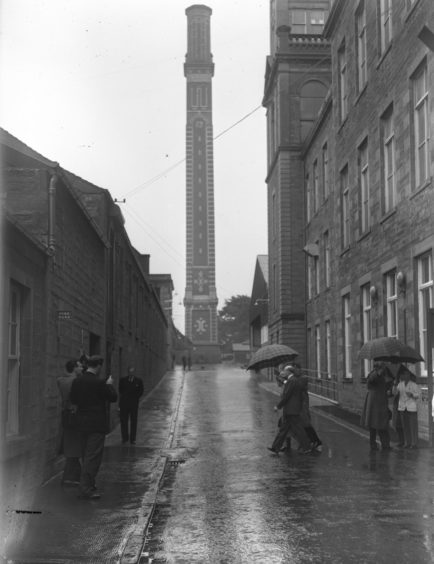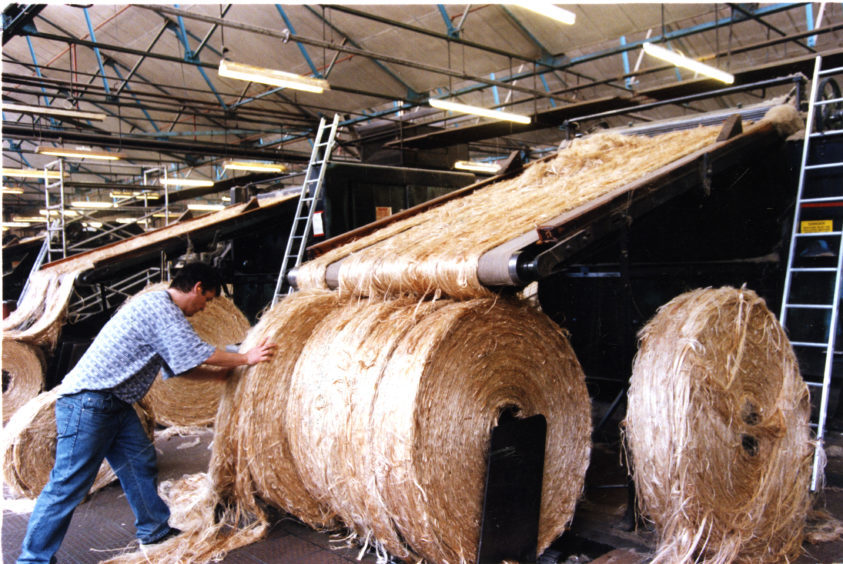At its height, the jute industry employed over 40% of the able workforce in Dundee.
The city was the world centre for the manufacture of the fabric and generations of mechanics, engineers and jute managers were trained in Dundee.
Abertay University has its roots in the Dundee Technical Institute, which was founded in 1888, and offered jute and spinning classes from 1889.
International reputation
These developed into a textiles department that gained a lasting international reputation, training students from at least 17 countries around the world, with many graduates going on to senior positions in local and international textile companies.
The department closed in 1984 following the long decline of the jute industry but its story is being brought to life again as part of a free online exhibition.
Developed in conjunction with Verdant Works, Scotland’s jute museum, A Factory in Miniature: Abertay University and Jute Training 1889-1984 will give online visitors a 360 walk-through of the exhibits, finding out how jute classes started in 1889.
Using Abertay University’s archives and the nationally recognised collection at Verdant Works, virtual visitors can explore aspects of the history of the department and how the jute classes developed in the face of the economic and technological challenges that affected the wider industry.
Part of the exhibition will feature the chance to hear extracts of an interview with the last head of the university’s textiles department, Jim Gordon.
Ruaraidh Wishart, Abertay University’s archivist, said: “This exhibition has been such a joy to research and curate.
“Abertay University has a very rich history, which has been an honour to explore in these last two years since I started in post.
“Our history with the jute industries is the perfect reflection of the importance of this institution.
“It reflects Abertay’s strong connections to industry, educating generations of mechanics, engineers, jute managers and more.
“It reflects our international connections, inviting students from countries all over the world to receive the best education for their futures.
“It reflects the city’s pride in providing opportunities for all as a place of discovery.
“We still hope to be able to show the exhibition at Verdant Works at some point in the future so visitors can see the objects and archives first-hand.
“However, the show must go on and despite current restrictions our goals to share Abertay’s history with the public are still very much a priority.
“This online exhibition has provided fantastic new opportunities to do this.”
Cox’s Stack
In 1838 the first jute mill was opened and at its peak there were 150 jute firms in the city with the 282-foot Cox’s Stack in Lochee becoming a landmark for what became the largest jute works in the world.
Other large mills included the Coffin Mill and the Seafield Works.
The jute industry was hit by a series of booms and slumps in the 19th century, before slumping into decline in the 20th century and eventually the clatter of the looms in Tay Spinners was the only sound of Juteopolis to be heard.
Mel Ruth Oakley, curator at Verdant Works, said: “It has been a pleasure to work with Abertay University to explore the ways the jute industry and Abertay University connect.
“The exhibition has allowed us to explore and bring together objects and documents in ways which we haven’t had the opportunity to do before.
“We hope that we will be able to host a physical version of this brilliant exhibition in the future and in the meantime I am delighted that it will be available online for all to enjoy.”
To visit the exhibition, go to https://www.abertay.ac.uk/visit/a-factory-in-miniature/
India’s jute brought prosperity to the city and the richest square mile in Europe
Dundee received its first consignment of jute around 1823 when it was stored in a warehouse because a buyer could not be found for it.
William Anderson, a linen manufacturer who was an expert in hemp, experimented on it but it was found to be lacking in strength and somewhat brittle.
In 1832, two Dundee merchants, Thomas Neish and James Watt, received a consignment, which they took to a local company.
The material was woven into sacking and sold to Dutch companies for the shipment of coffee beans.
At that time, manufacturers were obtaining their supplies from London and Liverpool, but in 1840 the first consignment arrived direct from Calcutta when the barque Selma sailed into Dundee harbour with 850 bales as part of her cargo.
India’s jute brought prosperity to the city.
Jute barons
Camperdown Works was the largest in Europe, boasting 820 power looms, 150 hand looms and more than 5,000 workers.
While their factories in Dundee were driving industry, many jute barons set up home in Broughty Ferry – then outside of the city boundaries and part of Angus – which meant they were able to avoid paying Dundee’s higher tax rates on the money they earned from their factories.
They built extravagant homes and created what was at one stage the richest square mile in Europe, including Carbet Castle, owned by the Grimond jute barons and worth £285, and Castleroy mansion house, which was valued at £405, and included stables and vineries.
Dundee jute barons and the British East India Company began to set up jute mills in India and by 1900 the Calcutta jute industry had captured much of the world jute trade.
By 1950, there were only 39 jute firms left out of a total of 150 at the industry’s height.
The end, when it finally came in October 1998, was without ceremony.
A cargo ship, the Banglar Urmi, arrived at Dundee docks on the Tay from Bangladesh.
It discharged some bales of raw jute which were the last to ever come ashore in the city.
Tay Spinners, which was the last jute spinner in Europe, closed shortly before Christmas with the loss of 80 jobs.
